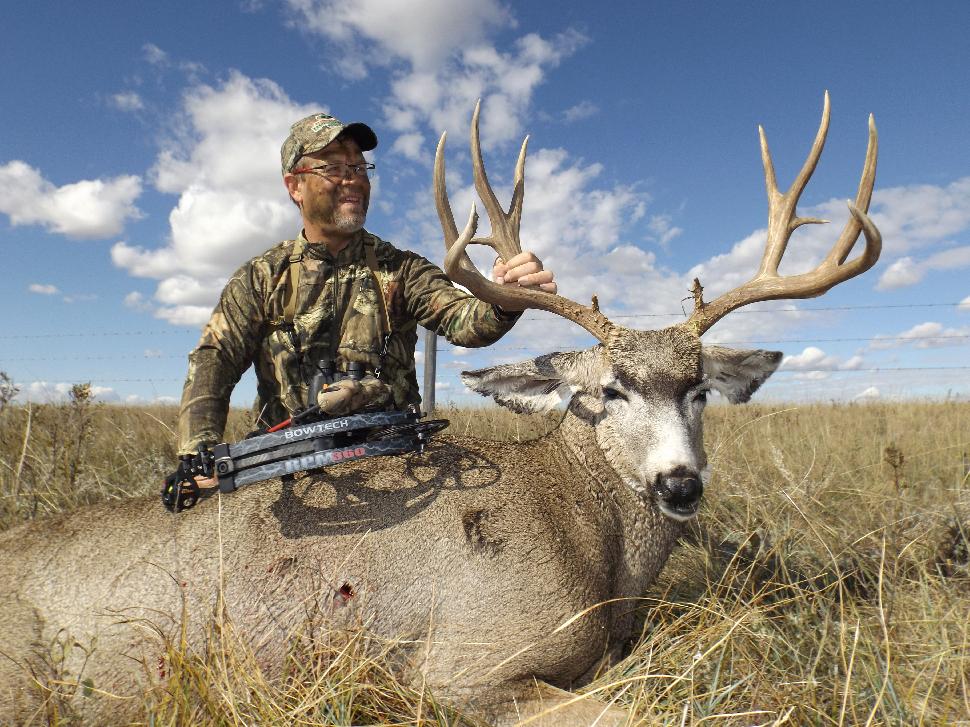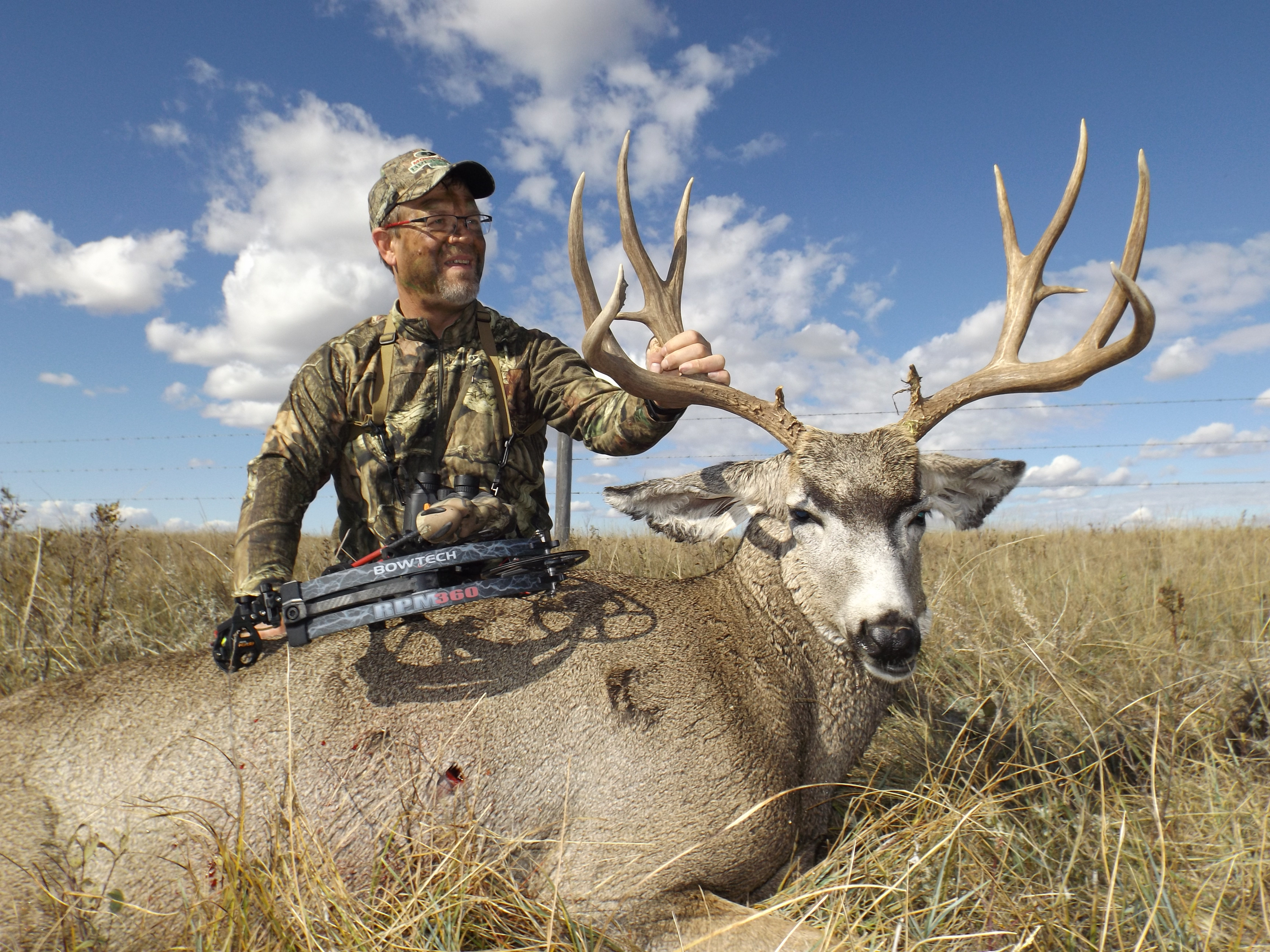Bowhunting prairie mule deer
Patience is the key to stalking open-country mulies
Advertisement
Most bowhunters think it’s impossible to successfully pursue mule deer in open country, and that gives those who do persevere a distinct advantage. Not only is there little competition from others, the deer are also not used to hunters sneaking in right on top of them.
Over the years, I’ve discovered a few secrets to successfully bowhunting grassland mule deer, as well as whitetails in some cases. From late August right into November, the approach is always the same and it works no matter what the weather. The trick is to find out where the deer bed, close the distance and wait patiently for the right shot.
Advertisement
Scout early
Head out before legal shooting light to find the deer you’d like to put your tag on. Follow ranch access roads and glass valleys, coulees and open hills—you never know where you’ll find deer, so cover lots of country. Use a spotting scope to determine antler mass and configurations, and whether it’s a mulie you’d like to harvest. I often look at several deer before finding a buck I want to stalk.
Finding a nice set of antlers often generates a heightened level of excitement, but be patient—the next couple of hours are usually the most critical of the hunt. Watch the deer from a distance and change vantage points if required. Never get too close, allowing the deer to go about its daily routine.
Advertisement
Mulies can wander several kilometres, making it a challenge to keep them in sight. Your patience will pay off, however, once you watch the deer bed down for the day—most big bucks will bed two to three hours after the sun comes up and stay down for most of the remaining daylight hours.
Stay downwind
Undoubtedly, the deer will bed in a low area along the edge of a wetland, farm field or small patch of shrubs, or in a creek bottom. With an unsuspecting buck tucked into his favoured comfort zone, this is your chance to get within bow range without being detected.
First, determine a route to stalk toward the deer so the wind remains in your face, ensuring you remain downwind. It’s a rare day the wind doesn’t blow in the open country, often increasing as the day goes on. So the later in the morning you begin your stalk, the more advantageous the wind will be for hunting; it can also help mask any noise you might make.
Go slowly
Always watch the terrain ahead of you in case the buck gets up to stretch or bed in a different spot. It’s not uncommon for a mule deer to stand, turn around a few times and settle back into its bed—when that happens, the last thing you want is to be standing there in plain sight. So as you draw nearer to where you saw the deer bed for the day, it’s time to slow down your approach. Use binoculars to scan every square inch in front of you before taking the next step. Watch for an antler tip or ear to reveal the exact location of the buck.
Get close
Once you pinpoint the bedded deer, silently move in to within 30 metres. This might mean taking off your shoes or crawling on your belly to get into the perfect location. At this point, your hunt becomes a waiting game. Stay focused on the area where the buck is bedded. If you look away or let your mind wander, he just might be standing there staring at you the next time you look.
Under no circumstance should you try to get the deer to stand up—let him do so on his own accord. A relaxed deer getting up after a sleep provides a much easier shot than one startled out of its bed by a tossed rock or ear-piercing whistle. In most cases, the deer will stand, stretch and turn its nose into the wind to start feeding. As soon as the buck is facing away from you, draw your bow, settle your sight pin on the vitals and let your arrow fly.
Field editor Brad Fenson hunts big game in all manner of terrain.


